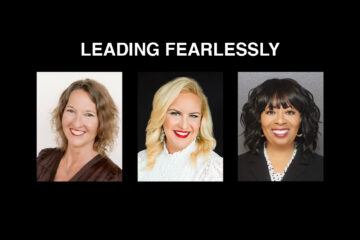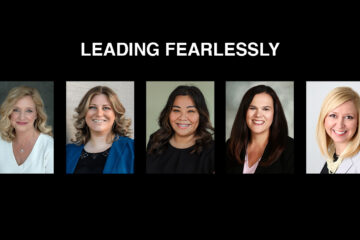As told to Emily Kestel

Upon summiting the Vinson Massif in Antarctica on Dec. 28, 2021, Jen Loeb became the first woman from Iowa to climb the “Seven Summits,” which are the highest peaks on the seven continents. She lives near Marengo.
The following story has been formatted to be entirely in her own words, and has been edited and condensed for clarity.
I look at fear as being on a spectrum. On the far end of the spectrum, you have complete fearlessness, no fear whatsoever. On the other end, you have a paralyzing fear, a pee-your-pants type of situation. When I’m climbing, I try to stay somewhere in the middle of that.
I see this quote every once in a while: “You can have fear riding in the car with you, but she has to ride in the back seat, and she doesn’t get to control the radio.” Fear needs to be there, but it needs to be managed.
You want to operate at a high level in the mountains, but you also have to have an awareness of all the things that can go wrong. You have to respect the mountain and be aware that things can go wrong in a heartbeat. Mountain climbing always involves an element of the unknown, and that’s part of the allure.
I grew up on a small family farm in the middle of nowhere. There was a little stretch of land with some timber and a creek that ran through it. I was always down there. I was in the trees, playing in the water, or riding my bike around like an absolute maniac. I was a little bit feral. I’ve always loved to move. The outdoors has always been my happy place – that’s where I feel at peace and relaxed and connected. Climbing brought those two things together perfectly for me.
I didn’t start climbing until 2010, when I was 34. I started out backpacking, and that was fun, but it wasn’t enough. I needed something more intense.
I didn’t have any experience climbing mountains. I was completely green. I didn’t know if my body could tolerate the altitude. There were lots of unknowns and lots of what-ifs. I didn’t have any connections in the mountain climbing world, so I was kind of fumbling around in the dark for a while. I eventually found some people that could show me the ropes, literally.
The more I got into it, the more I loved it. It kind of became my obsession. It took over almost every aspect of my life, from my nutrition to my sleep routine. It consumes a majority of my time. But that’s the kind of commitment you need if you’re going to play in the mountains.
When you start out, you climb small peaks; they’re less technical and not a whole lot of altitude. With each expedition I was going on, I was upping the ante. The peaks are progressively getting taller, progressively getting more technical. Then somewhere along the line, I heard people start talking about the Seven Summits. I had never actually considered doing that, because I never considered climbing Everest. I was always under the assumption that Everest was for the elite, professional and sponsored athletes.
In 2013, I climbed Denali. Denali is really brutal. The success rates are not very good. The altitude is a huge factor. The weather is a huge factor. You’re pulling heavy loads in a sled up the mountain and your pack weighs a ton. Every day is greuling, and it’ll grind you down to nothing.
Our team summited in good style and had a great time doing it. At the completion of the expedition, we were back in town. Everyone had showered and put on some clean clothes. We were down at the local watering hole to celebrate our success and say goodbye. The guides I had climbed with were talking to me and said, “Jen, you’re ready for Everest. You should go and do it.” I started laughing because I thought they were pulling my leg.
When I got back to Iowa, I actually started thinking about what they said. Those guys that suggested it are professional climbers. That’s what they do for a living. They’re not going to ever make a suggestion like that if they don’t want you up there.

I spent the entire summer weighing all of the pros and cons, looking at it from every angle.
The level of training I would need to do would be brutal. I’m already working a full-time job. I already put in anywhere from 60 to 70 hours every single week with my job. There were hours and hours and hours of training I was going to have to put in, plus figuring out the logistics and finances. I don’t have time to go play with my friends. I don’t have time to run home and see my family. I’m going to be doing nothing but training, working and sleeping.
There’s no time for playing games on Everest. You have to give 110%, or you’re not going to make it. So I was trying to decide, “Do I really want to dedicate every second of my day preparing for this expedition, knowing full well there’s no guarantee that you’re going to come home in one piece, or come home at all?”
I eventually got sick of thinking about it. I remember waking up one morning and there was a little voice in my head saying, “Oh, my God, Jen. Make up your mind. It’s a yes or no question. S—- or get off the pot.”
The one thing that really swayed me into actually saying yes was knowing that if I did not go and try, I would always look back and regret it. I would always wonder, “Could I have made it?” I didn’t want to have that regret.
So I made the decision, and it took three years of nonstop training and planning logistics.
Financially, it was a huge gamble. I’m not a wealthy person. I took out a loan against my house, knowing full well that it could all be for nothing. I could have not summited and then I would have blown my retirement for nothing.
When I first got into climbing, there would be a wide spectrum of reactions from people. Some were like, “Whoa, that’s cool, I want to see pictures, I want to hear stories.” Other people were like, “Jen, are you trying to die? Do you have a death wish?” For me, that was almost insulting, because I’m having fun. Some people like to ride motorcycles. Some people like to jump out of airplanes. Some people like to quilt. Do what makes you happy. My happiness just happens to be high-consequence.
Everybody is entitled to their opinion, and I am entitled to not care about what people think. Somebody’s opinion is not going to dictate how I’m running my life.
It got so bad preparing for the Everest expedition. A hundred times a day, people would tell me, “Jen, are you really going to climb Everest? You’re crazy.”
I actually decided to turn it into a fundraiser. I was going to charge people $1 for every time they told me I was crazy, and that’s how I was going to pay for the expedition. It didn’t work, because people wouldn’t give me $1. They would just tell me I’m crazy and turn around and walk away. But these people have never been on a mountain with me. They’ve never been on a mountain in their life. They had no idea what I was capable of.

Behind the scenes, there’s no glamour. When I’m climbing Everest, I’m gross. I haven’t showered in a month. I’ve worn the same clothes every day for two months. I’m sleeping on rocks and ice in a sleeping bag, freezing my ass off, thousands of miles away from everybody that I love and care about. Old-timer climbers always say, “Climbing is the art of suffering.”
Every mountain has its own personality. Within half an hour, that mountain can change. Weather can roll in, and suddenly you’re in a whiteout situation, or the wind has picked up. You have to focus on staying in the moment.
That’s one of the things I love most about climbing. It forces me to focus on being present. “What do I need to be doing right now? I need to move my foot right there, I need to switch out my fix lines, I need to put my hand there.” All the fluff, all of the things we worry about in the States, it drops away.
You can’t dwell on the what-ifs, all the little things that could possibly go wrong. In a climbing expedition, nothing ever goes smoothly. So your ability to be flexible and roll with the punches is what makes people successful. It takes a lot of patience. You have to keep that frame of mind that “I’m going to climb safe, I’m going to have fun and I’m going to keep a positive attitude.”
There’s a saying that the best climbers in the world are the ones having the most fun. These expeditions are stressful. There’s no creature comforts up there. You’re cold, miserable, hungry, tired, achy, hurting and maybe sick. But typically the most successful people are the ones that are relaxed. They’re laughing and cracking jokes. Type-two fun is still fun.


